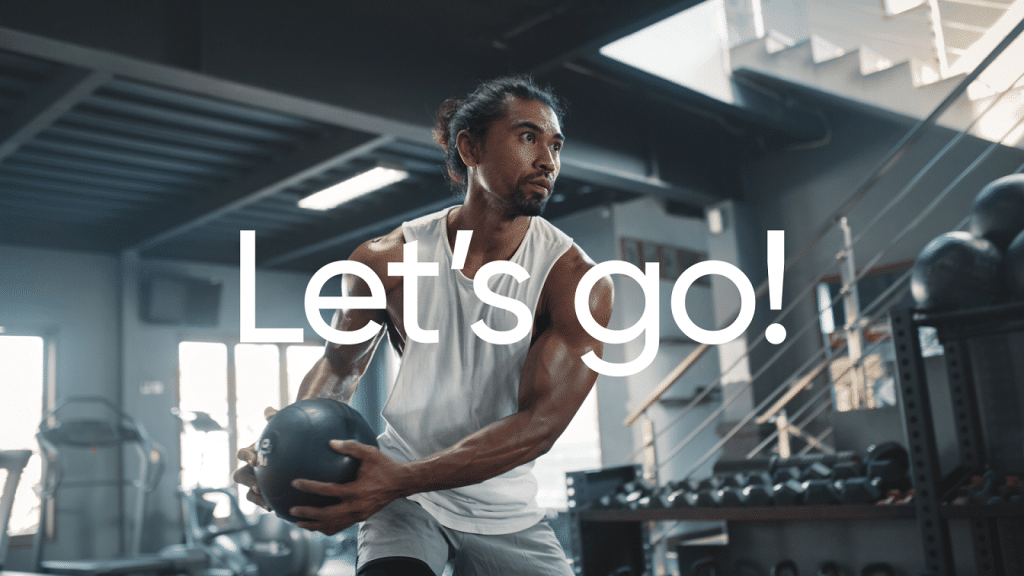Exercise can be difficult and tiring. Of course, if you’re aiming to accomplish a particular fitness level, pushing yourself just a little more each time is necessary. However, don’t forget about the other, smaller changes that may boost your workout performance and your results. Paying attention to your breathing is one of those little things that can have a significant impact.
Get your personalized
meal plan!
Breathing is something you are born knowing how to do and your body usually performs it on autopilot – but there’s more to it than that. There are various methods of breathing, which may be varied depending on a number of factors. When you consider the rate, quality, and control of your breathing in your training, you’ll be able to obtain better results.
What Happens To Your Lungs When You Exercise?
During exercise, two of the important organs of the body come into action: The heart and the lungs. They pump blood throughout the body to help it perform all of its functions. Blood is needed to deliver oxygen and nutrients to your muscles, both of which are vital for keeping you strong, active, and alert. The more intense the exercise, the harder these organs have to work – which requires them to take in more oxygen-rich air through the breathing process.
When you inhale, air travels through your nose and mouth, down your windpipe and into the lungs, which are located in your chest. In your lungs, oxygen from this air moves through long rows of thin air sacs called alveoli. These alveoli have very small blood vessels, called capillaries. The exchange of gases between the air and the blood takes place at these capillaries (5).
Your bloodstream carries this oxygen-rich air throughout your body to meet your muscles’ needs for activity. As you exhale, carbon dioxide – a waste product from metabolism – leaves your body through a similar route, out of the lower part of the lungs and up toward the nose where it can then be exhaled again into the open environment.
Exercise increases respiratory system efficiency (10). When you inhale, your diaphragm contracts and moves downward, which is accompanied by a reduction in the space available in your chest cavity. This creates negative air pressure (sucking air in), and this flow of air passes through the atmosphere into your lungs. At rest, only about half a litre of air enters each breath; but when you exercise intensely, up to three litres can be taken in per breath.
Read More: The Ultimate 10-Week Workout Plan: Lose Weight And Get Shredded With These Simple Exercises
What Is Proper Breathing During Exercise? – Diaphragmatic Breathing
Proper breathing techniques during exercise may include diaphragmatic breathing, which is the way you are supposed to breathe on your own. It’s deeper and slower than normal chest breathing, which helps reduce stress levels by activating your parasympathetic nervous system.
Diaphragmatic breathing involves (3):
- Slowly breathing in through the nose
- Filling up your abdominal area with air
- Slowly exhaling as the stomach collapses
This breathing technique has several benefits, including (3):
- Core activation
- Delivering enough oxygen to muscles to prevent fatigue from setting in too early
- Avoid stitches and cramping
Proper Breathing Techniques During Exercise
The right breathing technique varies depending on which exercise you’re doing. Once you’ve mastered diaphragmatic breathing, you should choose an effective breathing pattern based on the type of exercise you’re doing.
Controlled Breathing During Strength Training
A common mistake made by people who lift weights is holding their breath. However, making a habit of holding your breath can cause your blood pressure to rise, possibly resulting in dizziness, nausea or even a heart attack (6).
Instead, control your breathing with each movement. Experts advise that you breathe out during the concentric phase and breathe in during the eccentric phase of each movement. For example, when you’re doing a bicep curl, the concentric portion is when you lift the weight toward your shoulder, and the eccentric portion is when you lower it back toward the ground.
When you’re doing the squat, you should inhale just before you begin to lower down, and exhale as you extend your legs back to the starting position. In the case of a push-up, inhale, bend your elbows to lower your body down to the ground and exhale as you rise back up.
A controlled breathing pattern while strength training is important because it engages your core. A tight core equals more stability and can power each movement.
If you’ve mustered up the courage to crush your weight loss goal, let Betterme take the sting out of this demanding process. Our app will help you restructure your habits, remold your life and crank up your fitness results!
Consistent Breathing During Aerobics
If you’re doing an aerobic exercise like jogging, running, or biking, it’s best to breathe in through your nose and out through your mouth (2). With running, for example, you could breathe out for three foot strikes, and in for another three foot strikes as a way to help control your strides.
When breathing in this pattern during cardio workouts, make sure to not let the breath become too shallow. Breathe deeply enough that your stomach rises slightly with each inhalation. Shallow breaths mean less oxygen intake – which means low energy levels.
On the other hand, more consistent breathing brings more nitric oxide into your lungs which helps dilate the blood vessels and increases the oxygenated blood flow to the heart so that it will work more efficiently. It will also supply your muscles with enough oxygen to prevent fatigue and maintain a steady pace.
Long Inhales And Exhales For Yoga
To maintain muscle strength during yoga sessions, control both your breathing and movement. To build stamina for holding difficult poses, take deep, slow breaths that you hold for a few seconds before exhaling. Then, as you hold the pose for several minutes, inhale and exhale normally.
Note: If you’re just starting out with yoga or any other type of exercise, make sure to speak to your doctor first – especially if you have any respiratory issues like asthma or chronic obstructive pulmonary disease (COPD).
Tips For Breathing During Exercise
Here are a few tips to help you breathe more efficiently during exercise:
Take The Right Posture
The posture of your body during exercise is an important factor in how well you can breathe. If you slouch, your lungs have to work harder to expand your ribcage (4).
Avoid Holding Your Breath
When doing any strenuous physical activity, take deep breaths through your nose and exhale slowly to get the most out of every breath. Take advantage of your diaphragm muscle since it can pull air more deeply into your lungs than any other muscle in your body.
Establish A Rhythm
If breathing is difficult during exercise, try establishing a rhythm with long inhales and exhales as a way to stay focused on the task at hand rather than how tired you feel. This technique also helps develop better focus and can help you control pain levels as well as blood sugar levels if you suffer from diabetes.
Read More: Meditation Breathing Techniques: A Must-Do In Stress Management
Use Your Breathing To Assess Your Rate Of Perceived Exertion
It’s better to rate discomfort based on breathing patterns. If you feel your muscles burning during exercise, but are still able to breathe regularly through your nose and out of your mouth, then you’re probably at a level 4 out of 10 on the perceived exertion scale. But if you find yourself huffing and puffing even just after warming up or starting an easy routine, that’s a sign that you need to back off the intensity level so that you can catch your breath more easily.
Breathe Through Nose And Mouth
If you need to, breathe through your nose and mouth during workouts so that you can get the most oxygen possible (2). Your lungs are designed to take in more air than they can hold at once, but if they’re not able to do that, then consider switching breathing patterns. To find out which method is best for you, see what happens when you inhale through both options. If you feel lightheaded with too much airflow going into your nostrils, then switch to exhaling through your mouth instead.
Always Warm Up And Cool Down
If you’re just beginning a new workout routine, it’s important to take time in the beginning and after your session to warm up and cool down.
When you work out, muscles are put under stress which often causes them to tighten up. If they remain contracted once you’ve wrapped things up for the day, then your body will have trouble eliminating waste products – which can lead to muscle soreness or even injury (9). So always make sure that you get one last good stretch before you end your workout session. Then do the same thing about 20 minutes after exercising if possible.
Reasons why BetterMe is a safe bet: a wide range of calorie-blasting workouts, finger-licking recipes, 24/7 support, challenges that’ll keep you on your best game, and that just scratches the surface! Start using our app and watch the magic happen.
What To Do If You Have Trouble Breathing During Exercise
When your lungs are healthy, you keep a large breathing reserve. You may feel out of breath after exercise, but you will not be short of breath. When you have reduced lung function, you may use a large part of your breathing reserve. This may make you feel out of breath, which can be an unpleasant feeling, but it is not generally dangerous.
However, it’s important to know the symptoms associated with lung problems so that you seek a diagnosis and tweak your workout plans to accommodate your condition. Some of the common lung conditions that may cause you to have trouble breathing during exercise include:
COPD
COPD is a progressive lung disease caused by chronic inflammation and damage of the airways and lungs. It may also be referred to as emphysema or chronic obstructive pulmonary disease (COPD). COPD includes: Chronic bronchitis, Emphysema, and Bronchiectasis (8).
Asthma
Asthma is a long-term condition that causes your airways to become inflamed (swollen), which leads to increased mucus production in the lungs. As a result, it becomes difficult for you to breathe because your breathing tubes are partially blocked due to excess mucus and swollen tissues in your lungs (1).
Lung Fibrosis
As we age, our bodies produce more scar tissue. This scar tissue in the lungs (called pulmonary fibrosis) is associated with progressive shortness of breath and may be fatal if left untreated (7).
When To Seek Medical Attention
If you’re having trouble breathing during exercise, then pay your doctor a visit to evaluate your condition and get an accurate diagnosis so that you can continue exercising safely and effectively. Your doctor will test your lung function and check for signs of lung disease by conducting a series of tests such as:
- Spirometry
- Pulse oximetry
- Diffusing capacity
- Airflow obstruction testing
- Carbon monoxide diffusing capacity
- CT scans
The Bottom Line
Proper breathing techniques are important, not only for performance but for your overall health as well. Doing controlled diaphragmatic breathing can also help calm your nervous system and reduce stress levels which is especially useful before exercising.
DISCLAIMER:
This article is intended for general informational purposes only and does not address individual circumstances. It is not a substitute for professional advice or help and should not be relied on to make decisions of any kind. Any action you take upon the information presented in this article is strictly at your own risk and responsibility!
SOURCES:
- Asthma (2020, mayoclinic.org)
- Breathe In, Breathe Out…Breathing during Exercise (2017, udel.edu)
- Diaphragmatic Breathing (2018, clevelandclinic.org)
- Effects of Different Head-Neck Postures on the Respiratory Function in Healthy Males (2018, nih.gov)
- How the Lungs Work (2020, nih.gov)
- Impact of breath holding on cardiovascular respiratory and cerebrovascular health (2012, nih.gov)
- Pulmonary Fibrosis (2021, clevelandclinic.org)
- Study In Subjects With COPD (Chronic Obstructive Pulmonary Disease) (2016, clinicaltrials.org)
- Why Warming Up and Cooling Down is Important (n.d., tricitymed.org)
- Your lungs and exercise (2016, nih.gov)














